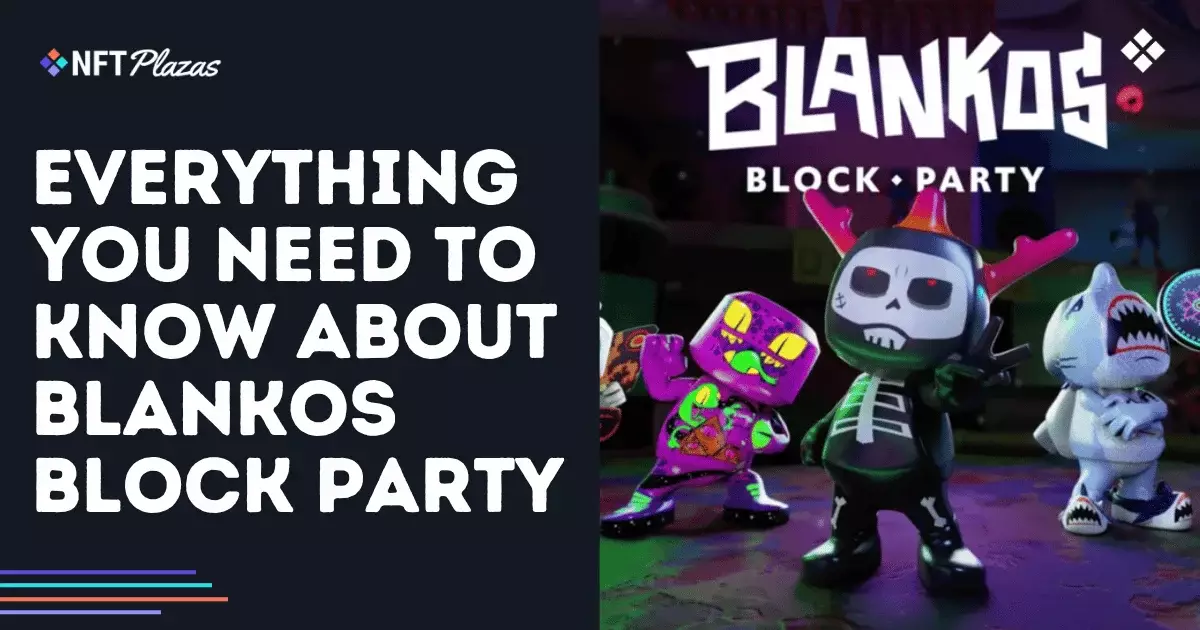Blankos Block Party was initially celebrated as a groundbreaking achievement in integrating blockchain technology into mainstream gaming. Its premise of “playable NFTs” and user-generated content promised a revolutionary new paradigm where players could truly own, trade, and profit from their digital assets. However, beneath the colorful veneer lay a series of fundamental flaws rooted in overambition and mismanagement. While the game showcased impressive collaborations with brands like Burberry and Deadmau5, these were more superficial marketing stunts rather than proof of genuine utility or long-term engagement. The game’s promise to blur the lines between gaming, commerce, and creativity was ultimately hollow, as most transactions relied on fiat, and blockchain features were secondary rather than integral. This overhyped narrative created an illusion of progress that did not match the underlying realities—namely, that blockchain gaming remained an unproven and often poorly executed frontier, susceptible to consumer skepticism and technical challenges. In essence, Blankos’ initial radiance was a mirage, fueled by marketing hype rather than sustainable growth or innovation.
The Failings of Web3 Gaming: A Mirage of Meritocracy
Despite positioning itself as a pioneer, Blankos’ approach to blockchain integration was fundamentally flawed in execution. The game touted a creator economy, allowing players to design assets and earn royalties; yet, this remained a niche activity, largely inaccessible to casual gamers who lacked crypto literacy or interest. The majority—over 85% of transactions—used fiat currency, exposing the disconnect between the game’s blockchain narrative and actual user behavior. The blockchain features, such as resale royalties and collectible trading, added little value for the broader consumer base, while complicating what could have been a straightforward gaming experience. This structural misalignment meant that the blockchain component was more cosmetic than foundational—a concession to hype rather than necessity. The hurdle of onboarding players into cryptocurrency wallets and understanding blockchain mechanics created barriers that most users avoided, diminishing the intended utility of the system. Ultimately, the perceived meritocracy of the creator economy was undermined by the reality that most players interacted with the game purely as a traditional multiplayer experience, reducing the blockchain system to an underutilized appendage rather than the core selling point.
Overextension and Strategic Missteps
Mythical Games’ ambition to push Blankos onto the Epic Games Store and develop a cross-platform presence appeared promising, yet it stretched resources thin and revealed a lack of strategic focus. The game’s initial success, bolstered by mainstream media attention and celebrity collaborations, did not translate into sustainable revenue or user retention. The decision to pivot from PC to mobile in late 2023 was symptomatic of broader issues—namely, the high costs of acquiring new PC players, the difficulty in maintaining user engagement in a competitive landscape, and the challenging regulatory environment surrounding blockchain games. Rather than doubling down on their innovative features, Mythical opted for a retreat, effectively abandoning the PC community that had helped popularize the title. This move not only alienated a dedicated segment of players but also cast doubt on the game’s long-term viability. Instead of reinforcing their strengths—such as user-generated content, social interaction, and brand collaboration—they prioritized short-term fiscal concerns. The shift to the Polkadot blockchain, while technically advantageous, was more a shield to deflect criticism than a strategic leap forward. It demonstrated a fundamental misunderstanding of what mainstream gamers value—simplicity, accessibility, and tangible entertainment—rather than speculative blockchain mechanics.
The Reality of Consumer Engagement and Marketing Failures
Blankos’ trajectory reveals that mainstream acceptance of blockchain games remains elusive. The game’s colorful aesthetic and partnership-driven content initially attracted wide interest but failed to cultivate a loyal user base. With most transactions conducted using fiat currency, the NFT and blockchain narrative was viewed as an unnecessary complication rather than an innovative feature. The unboxing mechanic, supposed to create scarcity, instead often frustrated players who found their virtual collectibles permanently inaccessible once opened. Moreover, the in-game marketplace, while innovative in theory, struggled to provide real utility or motivation for players to engage deeply with blockchain features. It became clear that mainstream gamers viewed blockchain as a barrier, not a benefit—a technology associated with speculation and lack of transparency rather than value or fun. Mythical’s marketing efforts, focusing heavily on collaborations and flashy content, failed to address core user experience concerns, ultimately eroding trust. The departure from PC to mobile was an admission that the game’s appeal was limited, and that engaging traditional mobile gamers, who prioritize gameplay fluidity over blockchain perks, was a smarter move—yet even this pivot seems fragile at best.
Blankos Block Party’s rise and fall serve as a stark lesson about the overhyping of blockchain technology in entertainment. While it undeniably pushed boundaries by blending NFTs, user-generated content, and big-brand collaborations, it was never equipped to sustain these innovations in a consumer landscape that remains skeptical of crypto-integrated gaming. The game’s strategic missteps, overreliance on hype, and failure to deliver meaningful utility for blockchain features ultimately led to its decline. As the industry moves forward, its legacy will be one of potential unfulfilled—proof that technology alone cannot guarantee success without genuine utility, accessibility, and a keen understanding of consumer desires. For proponents of blockchain in gaming, Blankos underscores that innovation must serve the players, not the hype. Only then can blockchain truly revolutionize the gaming ecosystem, rather than becoming another failed experiment in overreach.
















Leave a Reply